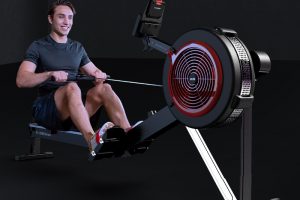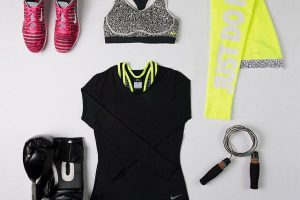Basketball is a beloved sport that captures the hearts of millions around the world. It’s a game of agility, strategy, and teamwork that requires a specific set of equipment to ensure both safety and optimal performance. From the right pair of sneakers to the perfect basketball, every piece of equipment plays a crucial role in the game. In this extensive guide, we will explore the world of basketball equipment, covering everything you need to know to excel on the court.
Basketball is a high-impact sport that places considerable strain on your feet. To ensure optimal performance and minimize the risk of injury, investing in the right basketball sneakers is essential. When selecting basketball shoes, there are several key factors to consider:
Shoe Fit
The fit of your basketball shoes is paramount. They should provide ample support, especially around the ankle, to reduce the risk of sprains. A snug, but not tight, fit is ideal.
Ankle Support
High-top basketball sneakers offer better ankle support, which can help prevent injuries like sprained ankles. Low-top shoes provide more freedom of movement but less ankle stability.
Traction
Traction is crucial for quick cuts, stops, and starts on the court. Look for sneakers with a durable outsole that offers excellent grip.
Cushioning
Basketball involves a lot of jumping and landing. Good cushioning in your shoes can reduce the impact on your joints and minimize the risk of overuse injuries.
Durability
Basketball sneakers need to withstand the rigors of the game. Look for high-quality materials and construction that can handle the demands of the sport.
Your choice of basketball will significantly impact the quality of your game. Basketballs come in various sizes and materials, and choosing the right one is essential for accurate shooting and ball control.
Basketball Size
The standard basketball size for men is size 7, while women typically use a size 6. Youth and junior players may use smaller sizes, but it’s crucial to select the appropriate size for your age group to ensure proper handling.
Material
Basketballs are made of different materials, including leather, composite leather, and rubber. Each material has its characteristics, such as grip, bounce, and durability. Choose the material that suits your playing style and the court surface.
Inflation
Proper inflation is essential for ball control. Overinflated or underinflated basketballs can affect your dribbling and shooting. Make sure to maintain the correct pressure according to the manufacturer’s recommendations.
Indoor vs. Outdoor
Basketballs designed for indoor and outdoor use have distinct features. Indoor basketballs typically have a better grip and feel, while outdoor basketballs are more durable and can withstand rougher surfaces.
The basketball hoop is the heart of the game. Whether you’re practicing free throws or competing in a game, having access to a sturdy and regulation-height hoop is crucial.
Regulation Height
A regulation basketball hoop stands at 10 feet (3.05 meters) from the ground to the rim. It’s essential to practice and play with a hoop at this height to ensure your skills are transferable to official games.
Backboard Material
Backboards come in various materials, including acrylic, tempered glass, and polycarbonate. Tempered glass backboards are the closest to professional-grade and offer excellent rebound performance.
Rim Type
The type of rim can affect the way the ball bounces when it hits the rim. Options include standard rims, breakaway rims, and flex rims, with breakaway rims being the most forgiving.
Portable vs. Fixed
Consider whether you want a portable or fixed hoop. Portable hoops are versatile and can be moved, while fixed hoops are more stable but permanent.
In basketball, safety should always be a priority. Protective gear can help reduce the risk of injuries during practice and games. Here are some key pieces of protective equipment for basketball players:
Mouthguard
Mouthguards protect your teeth and jaw from accidental blows or collisions on the court. Custom-fit mouthguards offer the best protection and comfort.
Knee Pads
Knee pads help reduce the risk of knee injuries, especially when you dive for loose balls or land awkwardly after a jump.
Ankle Braces
Ankle braces provide additional support to prevent sprains and injuries in a sport where quick lateral movements are common.
Compression Clothing
Compression shorts or tights can help reduce muscle fatigue and soreness, allowing you to perform at your best.
Wristbands
Wristbands absorb sweat and help keep your hands dry for a better grip on the basketball.
As a basketball player, having the right accessories can make your life on the court more convenient and enjoyable. Here are some essential basketball accessories:
Basketball Bag
A quality basketball bag keeps your equipment organized and makes it easy to transport your gear to games and practices.
Rebounder
A rebounder is a valuable training tool that helps you practice shooting and rebounding on your own.
Scoreboard
For friendly games or home practice, a portable scoreboard can help keep track of scores and game time.
Shooting Sleeve
Shooting sleeves provide mild compression and support to your shooting arm, potentially improving your shooting accuracy.
Water Bottle
Proper hydration is vital in any sport. A reliable water bottle is a must-have to keep you refreshed during the game.
In conclusion, basketball is a thrilling and dynamic sport that demands the right equipment to excel and stay safe on the court. From selecting the ideal basketball sneakers to choosing the right basketball and hoop, every element of your equipment matters. Furthermore, investing in protective gear and accessories can enhance your performance and overall basketball experience. By understanding the significance of each piece of basketball equipment and making informed choices, you can maximize your potential and enjoyment of the game. So, lace up those sneakers, grab your basketball, and hit the court fully prepared for an exciting and rewarding basketball journey.





Add Comment